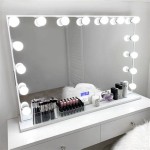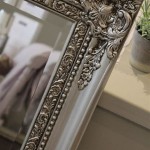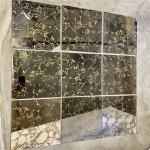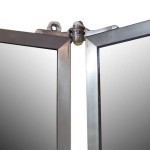Does a Concave Mirror Make Things Bigger or Smaller?
Concave mirrors, characterized by their inward-curving reflective surface, possess the intriguing ability to create both magnified and diminished images. The size of the image formed depends critically on the object's placement relative to the mirror's focal point and center of curvature. Understanding these relationships is key to grasping the versatile nature of concave mirrors.
The focal point (F) of a concave mirror is the point where parallel rays of light converge after reflection. The center of curvature (C) is the center of the sphere from which the mirror is notionally a part. The distance between the mirror's surface and the focal point is the focal length (f), while the distance between the mirror's surface and the center of curvature is the radius of curvature (R), which is twice the focal length (R = 2f).
When an object is placed beyond the center of curvature (further away than 2f), a real, inverted, and diminished image is formed between the focal point and the center of curvature. "Real" implies that the light rays actually converge at the image location, allowing the image to be projected onto a screen. "Inverted" signifies that the image is upside down compared to the object. This principle finds application in astronomical telescopes where distant celestial objects, effectively at infinity, form small, inverted images near the focal point.
As the object moves closer to the center of curvature, the image, still real and inverted, grows in size and moves closer to the center of curvature. When the object is located precisely at the center of curvature, the image is also formed at the center of curvature, and it is the same size as the object, still real and inverted.
When the object is placed between the center of curvature and the focal point, a significant shift occurs. The image, still real and inverted, becomes larger than the object and forms beyond the center of curvature. This principle is exploited in movie projectors, where a small film frame is positioned between C and F, resulting in a large image projected onto the screen.
The focal point marks a crucial transition in image formation. As the object approaches the focal point from the direction of the center of curvature, the image continues to enlarge and move further away. When the object is located exactly at the focal point, the reflected rays become parallel, and no real image is formed. Theoretically, the image is said to be at infinity.
Perhaps the most dramatic change occurs when the object is placed between the focal point and the mirror. In this scenario, the reflected rays diverge, and no real image is formed. Instead, a virtual, upright, and magnified image is formed behind the mirror. "Virtual" indicates that the light rays do not actually converge at the image location; the image appears to be behind the mirror's surface. "Upright" means that the image is oriented in the same direction as the object. This is the familiar magnifying effect of a concave mirror, commonly employed in cosmetic mirrors and shaving mirrors, allowing for a closer view of the subject.
The magnification produced by a concave mirror can be quantified using the magnification formula: M = -i/o, where M represents the magnification, i represents the image distance (distance from the mirror to the image), and o represents the object distance (distance from the mirror to the object). A negative value for M indicates an inverted image, while a positive value indicates an upright image. |M| > 1 signifies magnification, |M| < 1 signifies diminution, and |M| = 1 signifies an image the same size as the object.
The relationship between object distance, image distance, and focal length is governed by the mirror equation: 1/f = 1/o + 1/i. This equation allows for the calculation of any one of these quantities given the other two. It is important to adhere to sign conventions when using this equation. Distances are considered positive in front of the mirror and negative behind the mirror.
In summary, a concave mirror can produce a variety of images – real or virtual, inverted or upright, magnified or diminished – depending solely on the object's position relative to the mirror's focal point and center of curvature. This versatility makes concave mirrors essential components in various optical instruments and everyday applications.

Question Comparing The Sizes Of Images Produced By A Concave Mirror Nagwa
Objects In The Mirror Are Actually Images Article Khan Academy
Objects In The Mirror Are Actually Images Article Khan Academy
Objects In The Mirror Are Actually Images Article Khan Academy
How Do Reflections From Convex Mirrors Make Objects Appear Smaller Quora
Objects In The Mirror Are Actually Images Article Khan Academy
Objects In The Mirror Are Actually Images Article Khan Academy
Under Which Condition A Concave Mirror Can Form An Image Larger Than The Actual Object Quora
Why Does The Car Side Mirror Display Objects Appear Further Than They Are Not Just Make As Quora

Why Do I Look Diffe In Mirrors 5 Common Reasons








